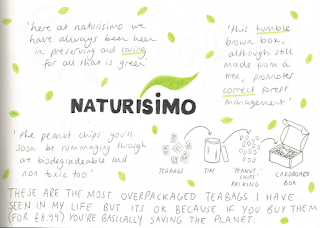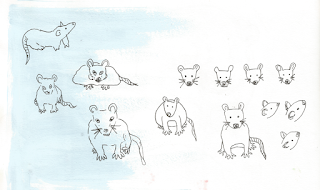Peer Feedback
Main Points
- Intellectual idea, well understood, lots of research has gone into it.
- Good understanding of how media can enhance the concept.
- It would be a good idea to link these products to well known brands.
- Think about getting some primary research - surveys or finding examples of consumerism.
- Professional presentation so far.
- More testing of ideas is needed, more practical work.
- It is not yet clear what products I will make - make some decisions.
- Its a good idea to propose these rather than make them.
- Very thorough project, documented well on blog.
- Specific issues need to be selected.
- More work needed to develop actual images.
Response to Feedback
Overall this was positive feedback with some really good constructive comments for improvement and development. However, there were a few things that I also realise I need to do more of.
The comments on my sheet said I have a lot of research which may be true for my dissertation but I don't feel I have done enough research specifically relevant to my visual project.
They thought my project was well documented on my blog which may be true for the stages I have gone through but I think that I need to be more reflective and evaluative as I go along.
I am glad they picked up on that I had no primary research. To get a better understanding of where this concept already exists in consumer culture I plan on going into the city centre and finding real life examples of where virtue signalling and selling values exists on current products. It may also be possible for me to draw from life as primary research if some of the social issues I choose are relevant locally.
Task
I struggled with this task as I admit I am really bad at making decisions on the spot. I think as a result of this, my sheet just explained the information I had already decided on and didn't help my project to progress that much. It did help me to organise my thoughts a little but in hindsight, it probably wasn't the best description of my project.
Good things that came from this include the to do list. I now have set myself the task of getting these things done by the end of the week, having lists like this has proven to be a good way of organising myself. Another decision I made was the formats of the images I am going to produce for each issue and also how many issues I am going to tackle.
Things that remain undecided include the actual issues I am going to work with, the analogue media I am going to use and the actual physical products that I will be proposing.
All in all, my practical project has not developed as much over the last two weeks as I had hoped but this is mainly down to me stressing over the written side of the module. I understand now that I need to focus on the practical side this week to get the project up to scratch. It needs to be productive!
I know I need to be drawing more but I also don't want to neglect the research side of my practical project. I will need facial research around social issues to work with although I don't want this to take up too much time this week when I should be drawing.























